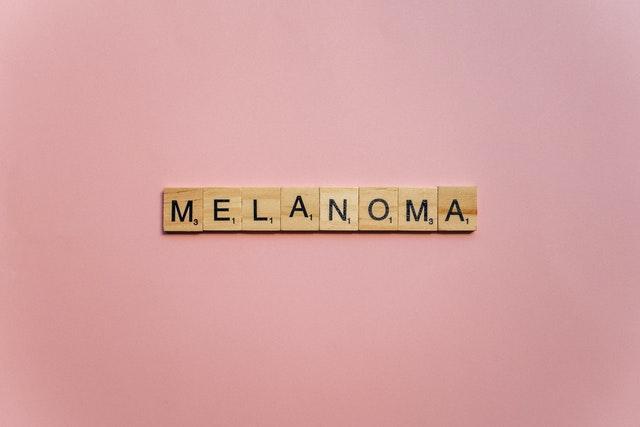
ABCDE melanoma assessment for skin cancer
Melanoma is the deadliest type of skin cancer. Luckily, if you catch it in the early stages, it’s highly treatable. UCLA data shows that localized melanoma, which has not yet spread to lymph nodes, has a 99% survival rate.
The best way to spot melanoma early is to regularly check changes on your skin for the ABCDE symptoms of melanoma. Here’s what you should know about the ABCDEs of melanoma.
If you want to protect your skin from cancer while enjoying a nearby body of water, SwimZip UPF 50+ swimwear has you covered. Our swimwear comes with a Skin Cancer Foundation seal of recommendation, so you know you’re protected no matter how much time you spend on a beach.
What are the ABCDEs of melanoma?
The ABCDE melanoma guidelines list the common warning signs of melanoma as identified by clinical dermatologists. It helps distinguish between normal moles and cancerous atypical moles. Here’s what to look for.
A: Asymmetry
Photo credit: https://www.aad.org/public/diseases/skin-cancer/find/at-risk/abcdes
A healthy mole is symmetrical. If you drew a line through the middle, both halves would approximately match up. If one half looks different from the other, that is a suspicious mole that should be checked by a healthcare provider.
B: Border
Photo credit: https://www.aad.org/public/diseases/skin-cancer/find/at-risk/abcdes
A healthy mole is typically smooth with even edges. Irregular, scalloped, or poorly defined borders are a warning sign of melanoma.
C: Color
Photo credit: https://www.aad.org/public/diseases/skin-cancer/find/at-risk/abcdes
Healthy moles are one color, usually a single shade of brown. Multiple colors (black, brown, red, white, or blue) or uneven color distribution point to issues related to melanin production and could be a sign of malignant melanoma.
D: Diameter
Photo credit: https://www.aad.org/public/diseases/skin-cancer/find/at-risk/abcdes
A healthy mole is typically less than 6mm (0.23 inches), or about the size of a pencil eraser. Skin changes related to melanoma are usually larger than 6mm, though early melanomas can be smaller.
E: Evolution
Photo credit: https://www.aad.org/public/diseases/skin-cancer/find/at-risk/abcdes
If a mole stays the same over time (no changes in size, shape, or color), it’s likely a benign mole. Any change in the appearance of any skin growth—growing, itching, bleeding, or developing new symptoms—can be a sign of skin cancer and should be checked by a professional.
The American Academy of Dermatology Association has developed a skin cancer infographic with information relevant to early melanoma detection. Check it out here.
How to check your skin for cancer
Since skin cancer can develop anywhere on the body, a thorough skin self-exam, including moles, freckles, pigmented skin lesions, and age spots, helps you notice changes before they become serious. Anyone can get skin cancer, regardless of skin tone, so everyone should make skin examination a habit.
For hard-to-see areas, ask a partner, family member, or friend for help. Here’s how to examine your skin:
- Full-body check in a mirror: Face a full-length mirror and examine your body front and back. Raise your arms and check your left and right sides.
- Arms, underarms, and hands: Bend your elbows and inspect your forearms, underarms, and palms. Don’t forget to check between your fingers and under your nails.
- Legs and feet: Look at the front and back of your legs, including your thighs and calves. Examine the tops and soles of your feet, as well as the spaces between your toes.
- Neck and scalp: Use a hand mirror to check the back of your neck and your scalp. Part your hair section by section so you don’t miss any spots.
- Back and buttocks: Use a hand mirror or ask someone to help you inspect your back, shoulders, and buttocks, as these areas are difficult to see alone.
When to see a dermatologist
If you notice any suspicious spots, schedule a professional skin exam with a dermatologist immediately. You can also schedule an annual check-up with a dermatologist to add another layer of protection.
How to protect your skin from melanoma
Sun exposure is the most preventable risk factor for melanoma and other types of skin cancer. Follow these steps to protect your skin:
- Regular skin checks: Check your skin for signs of melanoma. See a dermatologist immediately if you notice new, changing, or unusual moles (especially if they itch or bleed).
- Avoid peak sun hours: Stay in the shade between 10 AM and 2 PM when UV rays are strongest. Generally, if your shadow is shorter than you, seek shade.
- Wear protective clothing: Cover up with long sleeves, pants, and a wide-brimmed hat. Choose UPF 50+ swimwear, as it blocks 98% of UV rays. Our swimwear meets this standard. Check out our UPF swimwear here.
- Use sunscreen correctly: Apply broad-spectrum SPF 30+ to all exposed skin. Reapply every 2 hours and immediately after swimming or sweating.
- Don’t use tanning beds: Tanning beds increase melanoma risk by 75%. Use self-tanner if you want color, but keep using sunscreen while outdoors.
Melanoma ABCDEs FAQ
At what stage is melanoma incurable?
Melanoma becomes most difficult to treat when it reaches Stage IV, meaning it has metastasized to distant lymph nodes or organs. While treatment options such as immunotherapy can extend survival, Stage IV melanoma is generally not curable.
Early detection at Stage 0 or Stage I offers a near 100% 5-year survival rate, which is all the more reason for normal skin checks.
What is the 2-week rule for melanoma?
The 2-week rule is a clinical guideline that patients with suspicious skin lesions should be evaluated by a dermatologist within two weeks. This urgent referral applies when a mole or spot shows the warning signs of skin cancer, like asymmetry, irregular borders, color variation, diameter over 6mm, or noticeable changes.
What types of skin cancer exist, other than melanoma?
The most common non-melanoma skin cancers include basal cell skin cancer and squamous cell skin cancer, which together account for about 98% of non-melanoma skin cancer cases. Basal cell carcinoma typically appears as pearly bumps and rarely spreads, while squamous cell carcinoma may present as scaly red patches and has a higher chance of metastasis.
Other less common cancers include types of skin lymphoma called cutaneous lymphomas and benign skin tumors, though these types of skin growths can transform into cancerous lesions over time.
Does skin type and color increase the risk of skin cancer?
People with fair skin, light eyes, and red or blond hair have the highest melanoma risk due to lower melanin protection. Those with darker skin tones, including black skin and brown skin, can still develop this form of skin cancer, often in atypical locations such as palms, soles, or under nails.



Leave a comment
This site is protected by hCaptcha and the hCaptcha Privacy Policy and Terms of Service apply.